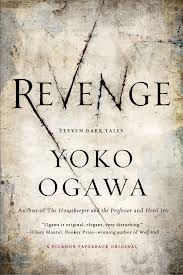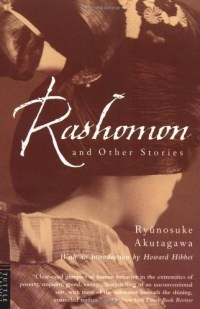Revenge by Yoko Ogawa
 Monday, February 4, 2013 at 11:19AM
Monday, February 4, 2013 at 11:19AM 
Published in Japanese in 1998; published in translation by Picador on January 29, 2013
The short stories collected in Revenge tend to be snapshots of turmoil, slices of emotion-charged lives. A woman spends an "Afternoon at the Bakery" where she goes to buy strawberry shortcake for her son's birthday, twelve years after he died while trapped inside an abandoned refrigerator. A paranoid woman gathers the tomatoes featured in "Tomatoes and the Full Moon" from an overturned truck at the scene of a fatal accident, then befriends a travel writer who discovers that she has a surprising secret. In "The Last Hour of the Bengal Tiger," a woman who is jealous because her husband is having an affair invents games of chance that dictate her behavior. A hospital secretary who has a crush on her boss listens to her boss' shocking confession in "Lab Coats." A bagmaker in "Sewing For the Heart" is asked to make a bag that will hold a woman's heart. A woman examines instruments of torture in "Welcome to the Museum of Torture" and imagines what she might do to her boyfriend. The curator of that museum dies and, while attending his funeral, his niece recalls him as "The Man Who Sold Braces" that might as well have been torture devices.
The stories are related to each other in ways that aren't immediately apparent. A girl asks a boy she doesn't really know to join her at an uncomfortable lunch with her estranged father in "Fruit Juice." During the course of that story, the boy and girl come across an old, abandoned post office that is filled with kiwis. The kiwis are from the orchards of "Old Mrs. J," who also grows carrots shaped like human hands. That story is narrated by a tenant in one of the old woman's apartments. The tenant had been the stepmother of a boy who, in "The Little Dustman," recalls her eccentricities as he travels to her funeral. The aging woman in "Poison Plants" is fascinated by the sound of a young man's voice as he reads her a story about a post office filled with kiwis. And so on.
Yoko Ogawa writes in a minimalist style that is exquisite in its simplicity. Some of the stories seem odd but uneventful until they arrive at twisted, almost ghoulish endings. A sense of the macabre links the stories as much as the characters they share. These aren't horror stories in the traditional sense, but many of the characters are isolated or damaged, living a daily horror that outsiders can't imagine.
The stories come full circle, the last connecting to the first. Often a story's connection to another story becomes clear only at the end, a revelation that shifts the story's context just a bit. The reader gains new insight into Ogawa's characters after realizing that the character played a role in an earlier story. The interlocking nature of the stories builds a depth that is greater than the stories achieve individually. It's tempting for that reason to devour the stories all at once, although it's also rewarding to pause and savor each one, like nibbling from a box of gourmet chocolates.
RECOMMENDED


